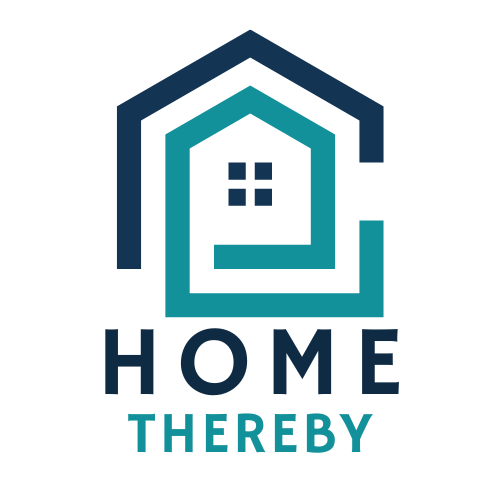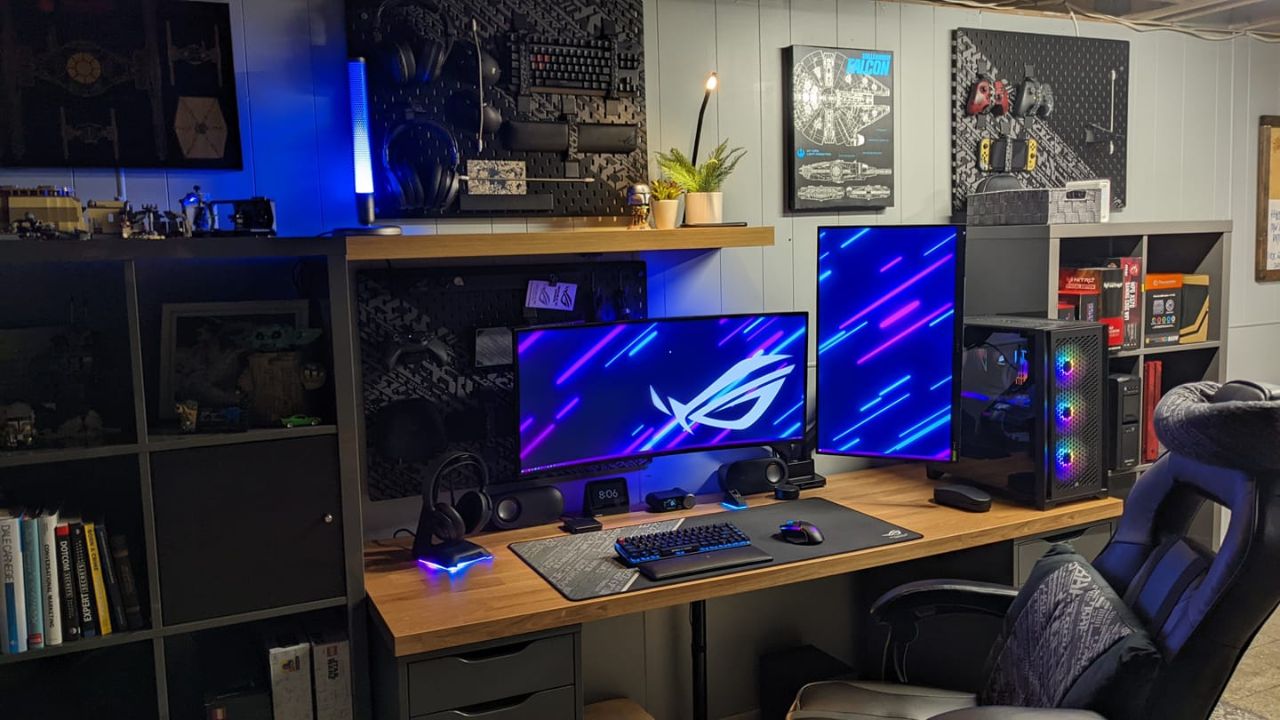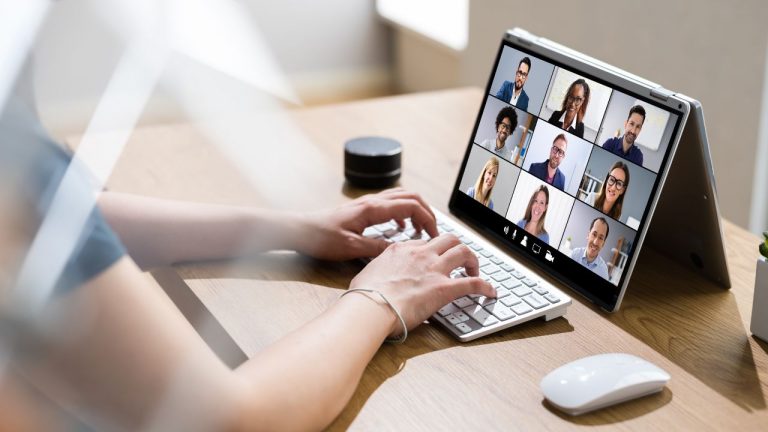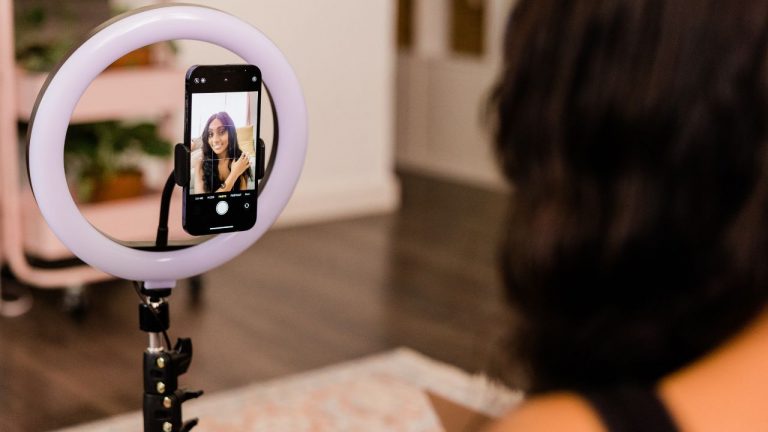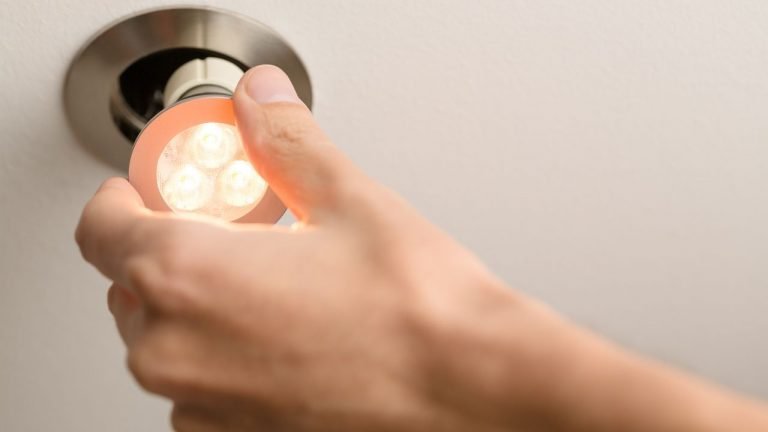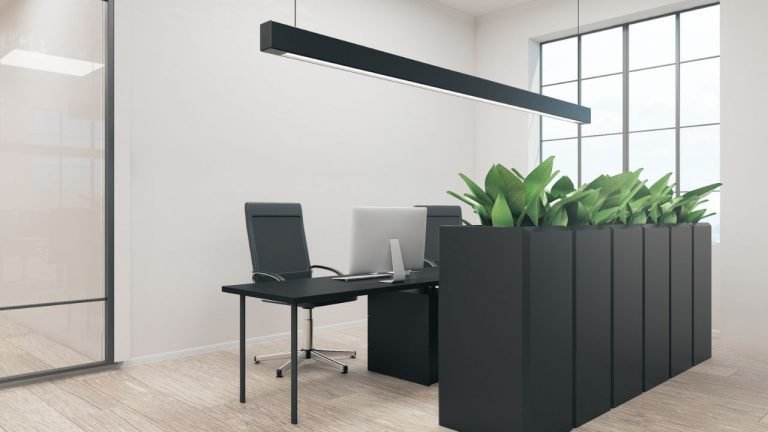Best Home Office Lighting Setup For Computer Work
Computer work takes a huge toll on the eyes. All the harmful light coming out of the screen causes severe eye fatigue. The least you can do for your eyes is install suitable lighting in your home office. But, what’s the best home office lighting setup for computer work?
Indirect lighting works best when it comes to computer work. Try to install a glare-free and ambient light fixture with a lower color temperature. Normally, a 3000-3500k color temperature will give you a warm or somewhat orangish tone in your home office.
If you want to keep your eyes stress-free even after long working hours, you must read this article. Here, we will go through every lighting option you have in the market to illuminate your home office.
So, without further ado, let’s get into it.
Is It Better To Have Light On While Doing Computer Work?
Experts agree that you shouldn’t sit in a dark room while working on your computer. It tends to intensify the harshness of the blue light emitting out of the screen. our eyes have peripheral vision. Apart from the main screen, it can also take in the surrounding behind it.
It is wise to avoid contrast lighting within the same field of vision. It makes our eyes work hard unnecessarily. That’s why your eyes feel teary when you scroll the smartphone after the lights are out.
We would recommend you to never work on your computer without the lights on. Only following this rule can save your eyes in the long run.
Best Lighting Type For Computer Desk
Remember that, for computer tasks soft and ambient light sources work the best. Because the display brightness is enough for you to see the screen. But without an external light, the display brightness becomes too harsh for the eyes. You can build up symptoms like blurriness, dry eyes, headache, etc. That’s the reason you need an appropriate light setup. However, the brightness shouldn’t be too much to create a glare.
Say No To Overhead Direct Lights
Before we give out the list of the best lighting type, let’s take a dig at the worst type. So, the lighting type you should avoid at all costs is a non-adjustable overhead light. Since the computer screen has a built-in backlight, the overhead lighting can cause more harm than good. If the position is wrong, the light can completely wash out your screen. You won’t be able to see what’s going on the screen. And, that’s not what we want.
To learn more about how you can light up an office without overhead lights, follow this article. Now that we have warned you, let’s take a look at the best lighting type for doing computer work.
Incandescent Light
Incandescent bulbs use 90% of the energy they get to produce heat. Only the remaining 10% is used for generating lights. It seems like a bad or inefficient thing. But it clearly matches the criteria we are looking for. For every watt, it produces approximately 14 lumens. While its energy-saving counterparts produce as much as 63 lumens.
Plus, incandescent bulbs in general stays on the warmer side of the color range. A color temperature of 3000 to 3500k is pretty common. As a result, you get a soft and glare-free light source.
Halogen/Fluorescent Light
If you don’t like the “too warm” temperature of an incandescent bulb, try a halogen lamp. These lamps produce light that is in the middle of the color temperature. It is not harsh to stress your eyes. At the same time not “too dim” which makes you want to sleep. Even when it comes to productivity, fluorescent bulbs last longer than incandescent ones.
If you have trouble seeing clearly in dim lights, halogen or fluorescent lamps can be the right one for you. To get this same effect from a LED light, you have to invest in multiple diffusers or dimmers. As you can see, the price will keep adding up. So, it’s better to stick with a source that produces low lumens per watt.
Task Lamps
As the name suggests, “task” lamps are designed for focused or direct lighting. It complements the main ceiling lights. Especially at night when are working on the computer, you can turn the task lamp to see better. Most task lamps have a narrower beam than ceiling lights. If you turn it on, it won’t interfere with the brightness in the whole room. Instead, it will concentrate all the brightness on a specific object. In this case, it’s your computer.
Since it is a form of direct lighting, try to go for a ‘warmer” color tone. So that, the light doesn’t come out to be harsh. Otherwise, your eyes will ache within a few minutes.
Where Should A Computer Desk Light Be Placed?
Positioning the desk light correctly is a game changer. It allows you to rip the most benefits from the light.
- If you place the light right in front of the screen, it will cause glare. The lumens from the light will directly land on the screen adding to its already existing brightness. If you don’t know, glaring refers to excessive illumination that is beyond normal. You can’t keep your eyes open without hurting them when this happens. To understand the glaring effect better, try to look at the sun during midday.
- Another example of bad positioning is keeping the desk light just behind the monitor. You might think it would eliminate the glaring effect. Actually, it does. But not in a good way. because now you have to face the “shadow” instead of a glare. The light will brighten up the back of the monitor. As a result, the keyboard or the front side of the computer would look excessively dark. That’s the opposite of what you want.
So, what’s the best position?
Keep It At The Side
Keeping the desk light parallel to your computer screen is the best position. you don’t have to worry about “glare” or shadow.” Because the light is not directly focused on the screen. it illuminates the surrounding area of your desk which comes back to you through reflecting. But it is more subtle and indirect. As you can tell already, it’s the least stressful for your eyes.
But what if the desk light you are using is too bright? In that case, the “glaring” effect is not completely removable through positioning. Don’t worry. We have explained some interesting ways to get rid of this glaring effect. Stay tuned for that.
Best Lighting For Home Office With No Windows
Sunlight works best for a home office lighting setup. Natural sunray has a temperature of 5300K. It is perfect to boost your mood and make you feel more productive. We would always recommend establishing your home office beside a big window.
However, your home space might not allow you to do so. In that case, what’s the best lighting option you have got to replicate natural sunlight? Here we go.
LED Light
Previously, we have mentioned the superiority of fluorescent or incandescent lights for computer tasks. However, we assumed that you have access to natural sunlight whenever extra brightness was needed. But, in this specific scenario, we would recommend getting an adjustable or dimmable LED light. Note the keyword “adjustable.”
LED lights in general illuminate an area better than its predecessor incandescent or fluorescent bulbs. It can easily mimic the natural sunlight. Since it is dimmable, you can reduce the intensity whenever you want. But how many LED lights are enough for your office completely depends on its size.
Normally, 3000 lumens are considered decent for an average size office area. It is appropriate if that area is only meant for conferences or meetings with clients. Increase it up to 5000 lumens, if you want to feel more productive.
Tips To Enhance The Brightness Of A LED Light
Here are some more tips to enhance the brightness in your home office:
1. Neutral Wall Colors
Did you know that you can increase the brightness of a room without a direct light? Yes. All you need is good wall paint. We would suggest painting the walls in a white or neutral shade. Because these colors are the most reflective. That means, with the same 60-watt bulb, a white wall will reflect more lights than a black one. That can bring significant change to your home office area.
2. Avoid Dark Ceilings
It doesn’t need much explanation. A dark ceiling will create a “gloomy” or “dull” vibe in your office space. Because dark colors tend to absorb the light more and reflect less. You will need too many high-watt bulbs to balance it out. It’s already hard enough to brighten up a room without any window. You should definitely avoid colors like black, grey, royal blue, etc on the ceiling.
3. Same Color Temperature
One thumb rule for interior decorating is that all lights have a similar temperature. Yes, you can go ahead and increase the number of lumens for different sections in the room. However, let’s say have 5600k temperature which is cool and kind of blue. Then, you installed another light in the room that has 3000k which gives a more orange or yellow tone. Having both a cool and warm tone in the same space is a big disaster.
It will slowly strain your eyes because of so much disparity.
4. Light Colored Furniture
You might have furniture like desks, chairs, bookshelves, etc in your office area. If most of them are painted black, the room won’t be as illuminated as you wanted. As we have said before, darker colors do not reflect light that much. If you have installed a certain number of lights for good illumination, you must also consider having lighter color furniture.
How Can You Reduce The Glaring Effect?
Remember we promised you some tips for reducing the glaring effect? Here, we will mention them to you. Have a look.
Louvers Light Fixtures
The main purpose of a louver light fixture is to distribute light in all parts of the room. That way, it reduces the intensity of light. It uses the “prismatic” model to achieve this. Within a panel, a lot of small cells are created. Each cell has a parabolic reflector. So, the light doesn’t land on your screen directly. It has to pass through each cell and then be reflected on your desk at last. This whole process helps to eliminate any kind of glaring effect.
Diffusers
Instead of a louver panel, you can cover the light source with a diffuser. It is a semi-transparent sheet that scatters the light. As a result, the light passing through it becomes weaker or softer. The most common diffusers are made of glass or plastic. However, you can get a translucent polypropylene shade for an aesthetic look. So, if you find the LED light to be too harsh, instead of buying a new one, try to cover it with a diffuser.
Anti-glare Filter
And, last but not the least, you can install an anti-glare filter. It’s a screen that you install on your monitor. It enables you to use the computer under harsh lighting that usually causes glare. The coating of the screen, filters out up to 80% of UV ray. Plus, it reduces the light intensity on the screen by up to 50%. That’s a lot. Moreover, it adds a “green” tint to the screen which helps to make the images crispier than before.
Display Light
Any computer has a display light setting. You can increase or decrease it to reach any level. Most of the time it’s neglected. We would like you to make the most out of this setting. If the light in your home office is too bright, try to play with the display setting. Find out the level which eliminates all types of glaring. As long as it’s not too dark, your eyes shouldn’t be stressed. However, if you can’t find an optimum level, try the method we have mentioned above.
The Bottom Line
Choosing the right light fixture depends on what type of work you do. It’s even more complicated if the work involves a lot of screen time. most people think the screen itself is a small light source. It is continuously emitting blue light. If you have read the article fully, you would know what’s the logic behind wanting a lighting setup for your computer desk.
In this article, we have tried to give you a proper insight into the best home office lighting for computer tasks. As you can see, the list is pretty long. And, there is no single light that suits everyone. So, you have to consider your own requirement along with the size of your home before you pick anything.
We hope that was helpful to you.
